If you are interested in being a Biomimicry affiliated faculty, please submit an application form.

Shirley-Ann Augustin-Behravesh
Senior Sustainability Scientist
School of Sustainability, Julie Ann Wrigley Global Institute of Sustainability
I examine the decisions, strategies and practices adopted by organizations to lessen negative impacts on the environment and society. I utilize nature’s lessons when attempting to uncover how organizations adapt, evolve and innovate, in light of changing institutional pressures and global sustainability problems.

Leanna Archambault, Ph.D.
Associate Professor
Mary Lou Fulton Teachers College
My research areas include increasing sustainability literacy among pre-service and in-service teachers, teacher preparation for online and blended classrooms, the use of innovative technologies to improve learning outcomes. I seek to introduce the concept of biomimicry to future educators so that they can teach the next generation to employ life’s principles in the design challenges they will encounter.

Daniel M. Aukes
Assistant Professor
The Polytechnic School, Fulton Schools of Engineering
I develop bio-inspired robots which can be used across a number of applications. These platforms can often be used to answer questions in the biological world, or to solve challenges by cutting through an infinite design space in typical engineering design processes. I seek to work with biologists to answer questions in biomechanics and locomotion. I have experience working on or with terrestrial, underwater, and flying applications, including the topic of grasping and manipulation, specifically with underactuated, compliant systems.
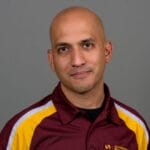

Hanna Breetz
Assistant Professor
School of Sustainability, Julie Ann Wrigley Global Institute of Sustainability
Dr. Breetz studies energy policy and politics. She’s interested in biomimicry as it relates to energy production, energy storage, and sustainable energy systems.

Yu Cao
Professor
School of Electrical, Energy and Computer Engineering
My research is on biologically inspired learning algorithm and hardware design, in order to achieve on-chip intelligence with high energy efficiency. Through the collaboration with TBC faculty, I will transfer the knowledge of biological systems to smart hardware design, and apply them to mobile learning systems.

Xiangfan Chen
Assistant Professor
The Polytechnic School, Fulton Schools of Engineering
My research interest focuses on additive manufacturing (3D printing), nanoimprinting, and nano-transfer printing, for emerging applications in the areas of photonics, energy, and biomedical engineering. Through the collaboration with TBC faculty, I aim to combine the bio-inspired designs with the advanced manufacturing technologies to pushing the capabilities into a whole new dimension, including smart wearable devices, high-sensitivity biosensing, and high-efficiency energy conversion.

Assistant Professor
The Polytechnic School, Fulton Schools of Engineering
Dr. Chen’s research is mainly focused on dynamic systems and control, with applications to automotive and transportation systems. Through the collaboration with TBC faculty, I aim to achieve safer, more energy efficient, and more agile control of complex mobility systems by applying bio-inspired control algorithms, abstracted and observed from flocking and swarm behaviors.

Mikhail Chester
Associate Professor
School of Sustainable Engineering and the Built Environment
My work focuses on the reliability of infrastructure to climate change and other hazards. We investigate how infrastructure are vulnerable to extreme events and the strategies that can be used to protect infrastructure and the people who rely on them. In developing adaptation strategies, we consider social and ecosystem dimensions in addition to engineering challenges.
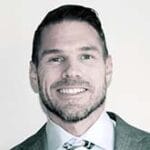
Paul Coseo
Assistant Professor
The Design School, Herberger Institute for Design and the Arts
Dr. Coseo examines how the design of cities impact natural processes and social communities. He approaches research, teaching, and practice with a humble appreciation for how our urban designs impact the sustainability of natural and social environments. Recently, he investigated how physical characteristics of eight Chicago neighborhoods contributed to urban heat islands and heat vulnerability. His other areas of interest include adaptation to climate change, environmental negotiation, community engagement, and social justice. Dr. Coseo teaches landscape architecture courses on ecological planning and design.

Michelle Fehler
Clinical Assistant Professor
The Design School, Herberger Institute for Design and the Arts
My background is in sustainable Visual Communication Design, and am now integrating the Biomimicry thinking framework into the design thinking process. The goal is to change the paradigm from a human-centered to a more life-centered process.

Lara Ferry
Professor and Associate Dean of Research and Strategic Initiatives
Strategic Initiatives School of Mathematical and Natural Sciences and New College of Interdisciplinary Arts and Sciences
My research as a biologist/functional morphologist seeks to understand “how things work.” Using this framework, I and my team address questions related to how organisms survive in their environments given the ‘tools’ (their anatomy) they possess, as well as how or why these traits evolved as they did. We are interested in questions broadly focused on the consequences of changes in traits over evolutionary time. We also seek to evaluate which traits are worth emulating for application in the built or human environment, and to determine if there are generalizable criteria for selecting traits with the fewest evolutionary trade-offs or compromises (the implication being that those traits that have evolved with many functional trade-offs likely are not optimized for a single function and therefore should not be emulated).

Rebecca Fisher
Associate Professor
School of Life Sciences
I am an Associate Professor at the University of Arizona College of Medicine-Phoenix and an adjunct faculty member in the School of Life Sciences at Arizona State University. I study the structure and regeneration of the musculoskeletal system and its role in locomotion and prey capture. By studying locomotor and feeding adaptations across a broad range of taxa, my goal is to shed light on the origins and evolution of musculoskeletal diversity. I am currently collaborating with engineers at ASU to investigate the neuromuscular anatomy of octopus arms as inspiration for the design of soft robots.

Robelyn Garcia
Post-Doc Interdisciplinary Scholar
Doctor of Behavioral of Health Program, College of Health Solutions School of Criminology and Criminal Justice
I have recently began integrating biomimicry into my geriatric practice by utilizing the biophilia hypothesis and biomimetic design to create nature inspired and emulated spaces for my gerontology clients and students. Through exploration, research and implementation of real-world biomimicry models, my goal is to decrease health conditions associated with geriatric obesity and geriatric depression.

Rizal F. Hariadi
Assistant Professor
Physics and Biodesign Institute, Biodesign Center for Molecular Design and Biomimetics
My lab designs, builds, and optimizes biologically-inspired tools from molecular to centimeter- scale, such as DNA origami nano-structures and chip-scale DNA origami nanoarrays. We use these tools to probe and perturb biological machines and their synthetic analogues. Along the way, we invent frugal technologies in the global health context for resource-poor settings.

Lee Hartwell
Director, Ph.D.
Biodesign Pathfinder Center, Biodesign Institute, Arizona State University
My primary interest is in learning. From a biomimicry perspective, biological evolution, the human immune system and bee foraging provide useful examples to study. In these systems, trial and error plays a major role through the generation of a large diversity of trials and the strong selection of favorable variants. I have extensive experience on the error side of trial and error.

Sharon R. Harvey
Senior Lecturer
ASU @ Lake Havasu
I develop pedagogy for environmental education with innovations based on eco-phenomenology and biomimicry.

Craig Hedges
Director, InnovationSpace
Herberger Institute for Design and the Arts
Biomimicry is a key component of the InnovationSpace model of design.

Renata Hejduk
Associate Professor
The Design School, Herberger Institute for Design and the Arts
Renata Hejduk is associate professor in The Design School in the ASU Herberger Institute. Her book The Religious Imagination in Modern and Contemporary Architecture: A Reader was published by Routledge Publishing on February 24. The book, co-edited with Jim Wiliamson, former School of Architecture Professor, marks the first publication that collects writings by and about Modern architects and their relationship to spirituality and the divine. This is an important introduction to the religious imagination in architectural thought of the last one hundred years, and to the interdisciplinary discourse that examines how different disciplines express abstract concepts such as faith, spirit, God and knowledge. It makes essential reading for any architect, aspiring or practicing, delving deeper into the meaning of architectural practice.

Julianne Holloway
Assistant Professor
Chemical Engineering, SEMTE
My research is in the area of bio-inspired material design for musculoskeletal tissue engineering and regenerative medicine. We use information about how human tissues are structured and naturally heal to guide our material design. We hypothesize that materials that mimic natural tissue will serve as a template for functional tissue regeneration.

Philip Horton
Assistant Director & Clinical Assistant Professor
The Design School, Herberger Institute for Design and the Arts
I am a Senior Sustainability Scientist who has worked on a number of renewable energy projects. My most recent work has had to do with Community Engagement, with Native Hawaiian Homesteaders and now with Palestinian refugees in the West Bank. I see the potential for using Life’s Principles as a way of making these and future projects much more symbiotic with the natural climate and habitat that surrounds them.

Sayfe Kiaei
Professor
Ira A. Fulton Schools of Engineering
Sayfe Kiaei has been with ASU since January 2001. He is a professor and Motorola Endowed professor and chair in analog and RF integrated circuits. He directs ASU’s Center on Global Energy Research and is also the director of NSF Connection One research center with a focus on integrated communication system. Kiaei was the associate dean of research at the Ira A. Fulton Schools of Engineering from 2009 to 2102. From 1993 to 2001, he was a senior member of technical staff with the Wireless Technology Center and Broadband Operations at Motorola where he was responsible for the development of RF and transceiver integrated circuits, GPS RF IC and digital subscriber lines (DSL) transceivers. Kiaei was an associate professor at Oregon State University from 1987 to 1993. He was the co-director of the industry-university center for the Design of Analog/Digital ICs (CDADIC). He has published over 100 journal and conference papers and holds several patents and his research interests are in wireless transceiver design, RF and Mixed-Signal IC’s in CMOS and SiGe. His research projects are funded by a large number of industrial sponsors including Motorola Inc., Intel, the National Science Foundation, Texas Instruments and SRC. Kiaei is an IEEE Fellow, and has been the chair and on the technical program committee of several IEEE conferences including RFIC, MTT, ISCAS and other international conferences.

Hamed Khodadadi Tirkolaei
Assistant Professor of Research
Center for Bio-mediated and Bio-inspired Geotechnics (CBBG), School of Sustainable Engineering and the Built Environment
I am interested in developing and using biologically-based solutions to the challenges that vex geotechnical infrastructure systems. The primary focus of my research has been on using microbial and enzymatic processes, and recovery of resources from wastes to create environmental-friendly grout materials for improving mechanical properties of soils.

Michael N Kozicki
Professor
Electrical, Computer and Energy Engineering
The distinctive branching patterns of dendrites surround us and are of great importance to the workings of the natural world. Trees, desert washes, lightning, and even the connections within our brains are all dendrites and as such possess interesting characteristics. In mathematics, dendrites are elegant solutions to the problem of connecting many points together with the minimum possible total path length. In nature, a dendrite is the most efficient topology for moving materials (nutrients, water), energy (electricity), or information (nerve impulses) into or out of a distributed system. We were not the first to recognize the biomimetic potential of dendrites but we do have a unique view of what drives their formation and believe that we can improve how they may be accurately modeled and ultimately applied in electronic systems.

Adair Landborn
Curator of Cross-Cultural Dance Resources Collections and Clinical Assistant Professor of Dance, ph.D.
School of Film, Dance and Theatre
My interdisciplinary doctorate in somatic studies and the anthropology of dance included investigations into the sensory foundation of animal and human movement patterns, human/animal behaviors and interactions, and the diversity of cultural patterning in dance. Each spring I use my dissertation, published in book form in 2015, Flamenco and Bullfighting: Movement, Passion and Risk in Two Spanish Traditions in my ASU course: ethnography of dance practices. Students explore theories of mimesis and alterity and develop skills for encountering and respecting difference, in cultural contexts and in explorations of the non-human Other.

Jean Larson
Education Director/ Assistant Research Professor, Ph.D.
Center for Bio-mediated and Bio-inspired Geotechnics (CBBG)/ School of Sustainable Engineering and the Built Environment
My research focuses on the efficient and effective transfer of knowledge and learning techniques within biogeotechnical engineering to support the development of sustainable solutions to geotechnical infrastructure problems. I am interested in innovative and interdisciplinary collaboration in relation to bio-inspired design and strengthening the bridge between K-12 learning and higher education in terms of learning from nature and engineering content.

Christine Lee
Assistant Professor Wood/Sustainability, Senior Sustainability Scholar
Julie Ann Wrigley Global Institute of Sustainability School of Art, HIDA
I design and build sculptural forms, functional objects, and installations drawing from my training in furniture design/woodworking and other fabrication methods using wood, fiber and plastics and composite materials. I have been manipulating materials in search of visible and tactile patterns that emerge from seemingly divergent areas. I am particularly interested in working with those affiliated with the Biomimicry Center to identify patterns at the intersection of nature, function and design aesthetics.

Cindy(Xiangjia) Li
Assistant Professor
School for Engineering of Matter, Transport and Energy
My research focuses on multi-scale 3D printing with bioinspired design methodologies and programmable functional materials for potential applications in interface, biomedical devices, and flexible sensor. My research interest is the development of novel additive manufacturing processes to explore and create functional devices with biomimetic hierarchical structures and material systems.

Nariman Mahabadi
Assistant Research Professor
School of sustainable Engineering and the Built Environment
My research interest is in bio-inspired design of geo-systems to improve the efficiency and resilience of geo-structures. I develop new theories, numerical models and experimental devices to characterize fundamental physical properties in porous and granular media with the emphasis on hydro-thermo-chemo-mechanical coupled problems.

Hamid Marvi
Assistant Professor
School for Engineering of Matter, Transport and Energy
My research aims to study fundamental physics behind interactions of biological systems with their surrounding solid, granular, and fluidic environments. Utilizing biological insights derived from these studies, I would like to develop bio-inspired robotic systems and programmable interfacial structures for search and rescue, exploratory, and medical applications.

Michael K. McBeath
Professor, Ph.D.
Department of Psychology
My research expertise is in human and animal perception-action modeling and applications, while my teaching areas span Perceptual Psychology, Design and Engineering Psychology, Music & Art Perception, and Quirky Science. One example of my research is testing and modeling how humans and dogs optically determine where to run to catch balls and Frisbees, and then designing a biomimetic ball-catching robot based on the same evolutionarily-selected perception-action control principles.

Ryan Milcarek
Assistant Professor
School for Engineering of Matter, Transport and Energy
My research interests are in areas of clean and efficient sources of thermal and electric generation. Previous research includes fuel cells, micro-combustion, batteries, cogeneration and ceramic materials. I am interested in how power generation can be more bio-inspired including how biological systems store, transfer and covert molecules typically utilized in these systems.

Thomas Moore
Regents’ Professor, School of Molecular Sciences (SMS), Center for Bioenergy and Photosynthesis, Distinguished Sustainability Scientist
Global Institute of Sustainability and Honors Faculty, Barrett Honors College School of Life Sciences
Our research is in artificial photosynthesis in which we attempt to translate the lessons from photosynthesis into design principles for solar energy conversion technologies able to sustainability meet human needs for food, fuel and fiber. I give a series of lectures on sustainability to all entering students in SMS and participate in biochemistry graduate courses in SMS I am on the advisory council of institutes for sustainability in Brazil and hope to see those institutes affiliated in some way with TBC.

Associate Professor, Biomedical Engineering Barrett Honors Faculty
School of Biological and Health Systems Engineering
Expertise and interest – My research interests are in the areas of neural interfaces and neuromodulation. I am interested in developing brain-like artificial interfaces with the nervous system. I am also interested in developing technologies to communicate with the brain and the nervous system that mimic the way the body does it.

Garth Paine
Associate Professor, Digital Sound and Interactive Media and Co-Director
Acoustic Ecology Lab AME and Music
I am a musician and composer, but I also co-direct the acoustic ecology lab which explores community engagement in listening and field recording as a path to stewardship and agency around climate action. The AELab also develops VR sojourns in national parks for heath care applications. I composed and performed a work to launch the Biomimicry Centre and collaborate with members of the centre.

Theodore Pavlic
Assistant Professor
School of Computing, Informatics, and Decision Systems Engineering and School of Sustainability and School of Life Sciences
I am interested in how autonomous systems make adaptive decisions in changing environments. I study this problem in the contexts of non-human living systems (ants, bees), socio-technological systems (cloud-sourced human computation), and artificial systems (robotics, automation systems in the built environment). I am particularly interested in translating knowledge across these three spaces, as in translating the way ants achieve macronutrient regulation to methods for balancing energy around buildings that meet human needs with efficiency and resilience that rival state-of-the-art methods.

Darren Petrucci
Professor of Architecture and Urban Design
The Design School, Herberger Institute for Design and the Arts
Dr. Petrucci’s design and research focuses on what he calls “iAmenity InfrastructureTM” which develops new public-private urban infrastructures that create identity and facilitate multiple scales of public use within the contemporary city. He is the founder and principal of A-I-R [Architecture-Infrastructure-Research] Inc.. and the winner of a Progressive Architecture Award from Architecture Magazine for his project “GLUE: Generic Landscapes Urban Environments” (commercial corridor revitalization strategies along Scottsdale Road in Scottsdale Arizona), and the NCARB Prize for his project “Stripscape: Pedestrian Amenities on 7th Avenue.” He teaches courses on applied research and design collaboration in the built environment.

Stephen Pratt
Associate Professor
School of Life Sciences
I study the emergence of complex social behavior in leaderless, decentralized groups, particularly social insect colonies. My lab works to understand the behavioral rules and communication networks that allow colonies of ants and bees to act as a collective intelligence. We also work with engineers to translate lessons from social animals to human-designed systems, and to develop innovative tools for the analysis of behavior.

James Scott Reeves
Instructor
The Design School, Herberger Institute for Design and the Arts
I introduce biomimicry to students from ASU’s schools of business, design, engineering, and sustainability, via the InnovationSpace program. Biomimicry is one of my favorite models for transdisciplinary communication and collaboration. I refer to it often when I teach design thinking, industrial design, and visual storytelling. The Life’s Principles that best describe my role at the Biomimicry Center are Incorporate Diversity and Cultivate Cooperative Relationships.

Professor
Computer Science, CIDSESchool of Computing, Informatics, and Decision Systems Engineering
In self-organizing particle systems, I take inspiration from collective biological and physical systems to envision an abstraction of programmable active matter. We investigate the capabilities and properties of simple computational elements called particles with limited memory and communication to self-organize in order to solve system-wide problems of movement, coordination, and configuration. More broadly my expertise is in distributed computing and algorithms, and self-organization.

Elena Rocchi
Coordinator, Clinical Asst Prof, Faculty Advisor
BSED Program, Architecture Program, Barrett Honors College
As the coordinator of the BSED program at ASU The Design School, I thank you for giving me the opportunity to affiliate to your institute, one of the most important in investigating directions humanity can take to address the complex societal and environmental issues we face today. I am happy to collaborate with you since the notion of environmental design is strongly geographic and social: environment is the CONTEXT (somatic traits, archeology), the CULTURE (cultural legacy and modern humans), and the CLIMATE (ecosystems) of a place, the very first condition of the relationship in between interior and exterior, domesticity and monumentality, past an future, primitive and civilized, art and nature. The BSED program new direction wants to explore the interconnectedness of the 3 notions combining innovative design thinking with insightful urban/regional geography and social justice research to understand how daily lives are impacted by the built environment of extreme climatic desert conditions and the Southwest. Our program can investigate with TBC some of the questions we are posing to our student and collaborate in trying to address them: how does a built environment belong to the land? How do the built environment and land belong to the environment? And how does the environment serve the needs of humans and their activities, which brings us back to the built environment?
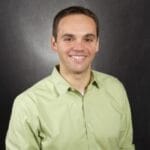
Konrad Rykaczewski
Assistant Professor
School for Engineering of Matter, Transport and Energy
My research focuses on development of materials and methods for augmenting heat and mass transport processes. In many projects we either look for inspiration in already described biological examples or try to uncover new natural mechanisms.

Jae-sun Seo
Assistant Professor
School of Electrical, Computer and Energy Engineering
My research expertise includes designing energy-efficient neural networks in various hardware platforms (e.g. ASIC, FPGA, integration with emerging devices). The custom hardware that we design implements a broad range of neural network algorithms that are inspired by the operations in biological nervous systems.

Dennita Sewell
Professor of Practice
School of Art, Fashion
I attended the Biomimicry workshop in Ajo. The awareness of biomimicry that I gained at that event helped me understand the nuances of how biomimicry can be utilized in fashion from design to systematic thinking and constructions. I am the area coordinator for fashion and am involved in planning our courses. I hope to continue to learn about biomimicry and naturally fit it in to fashion coursework.

Zachary Shaffer
Instructor
School of Life Sciences
I study insect societies: ants, cockroaches, honeybees, and carpenter bees. These animal societies may offer biological inspiration for solving human problems. With their complex collective behavior and division of labor the social insects have had to solve many challenges that (in one form or another) might similarly face humanity. As a teacher, I always hope to convey to my students the often amazing design solutions that living creatures have evolved in response to the challenges of survival!

Dosun Shin
Associate Professor
Industrial Design/The Design School
Prof. Shin’s research interests center around the ‘humanization of technology’ and new product innovation and development. Biomimicry has been taught in InnovationSpace studio Prof. Shin is involved, and he is leveraging Biomimicry Life’s Principles as Design Principles in Industrial Design to create innovative product strategies for sustainable solutions. As the Biomimicry Education Advisory Council member, Prof. Shin has been serving and sharing his expertise for the curriculum development of ASU’s biomimicry program.
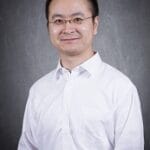
Kenan Song
Assistant Professor
Manufacturing Engineering
Kenan Song’s research focuses on textile engineering, coating technologies, and 3D printing. Currently, the Song’s group look into bio-inspired nano-particle control in traditional and novel manufacturing processes.

Nicholas Stephanopoulos
Assistant Professor
Ph.D., School of Molecular Sciences, Biodesign Center for Molecular Design and Biomimetics
My work involves using biological molecules (such as peptides, proteins, and DNA) and bioinspired self-assembly principles to create novel nanomaterials with applications in medicine, biology, and fundamental science. My work is highly biomimetic, borrowing heavily from systems such as cells and organisms to create dynamic and functional materials that approach the complexity and adaptability of biology.

Thomas Sugar
Professor
The Polytechnic School, Engineering Program
I design and build wearable robotic systems mimicking the human musculoskeletal system.

Benjamin Timpson
Assistant Professor of Photography
School of Art
Why become an artist when Nature has mastered it already? My entire philosophy on art revolves around the intricate and infinite potential in the natural world. Helping us see what nature has created and how we can use its designs in our art.
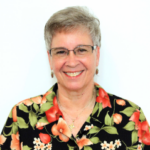
Molina Walters
Clinical Associate Professor
Mary Lou Fulton Teachers College
My work and expertise involves science and environmental education with educators, both pre-service and in-service teachers, and with K-16 students. My work focuses on the development of science skills and knowledge and environmental literacy that can impact the development of citizenship skills to make educated and informed decisions and awareness to help groups and individual acquire an awareness and sensitivity to the total environment and its allied problems.

Jeffery L. Yarger
Professor
School of Molecular Sciences
Jeffery L. Yarger is a professor of chemistry, biochemistry and physics at Arizona State University. He holds a joint appointment in the School of Molecular Sciences and the Department of Physics. He is also the founding and current director of the Magnetic Resonance Research Center (MRRC). His primary research interests are in biophysical chemistry, nano-materials, biopolymers and the general field of disordered or amorphous materials. His current research interests includes (i) fundamental structural and dynamical characterization of amorphous materials with an emphasis on biopolymer (i.e., spider silk), amorphous pharmaceuticals and polyamorphic systems; (ii) Development of Nuclear Magnetic Resonance (NMR), X-Ray Diffraction (XRD), Neutron Scattering, Brillouin Scattering, Vibrational Spectroscopy and Calorimetric techniques to better characterize amorphous materials; (iii) Synthesis and molecular level characterization of nano-materials and nano-composites; (iv) The applications of amorphous materials and molecular level characterization techniques to biomedical instruments and human health; and (v) Materials under extreme conditions. Prior to coming to ASU, he was with the University of Wyoming as an assistant professor of chemistry with an adjunct appointment at Colorado State University as an assistant professor of physics (1998). He also joined Argonne National Laboratory (ANL) as a visiting scientist, a position he still holds with collaborations, personnel and labs being maintained at ANL. In 2001, he was promoted to associate professor and senior scientist status at the University of Wyoming and Argonne National Laboratories, respectively. He also worked for DuPont-Merck, prior to completion of his doctorate.